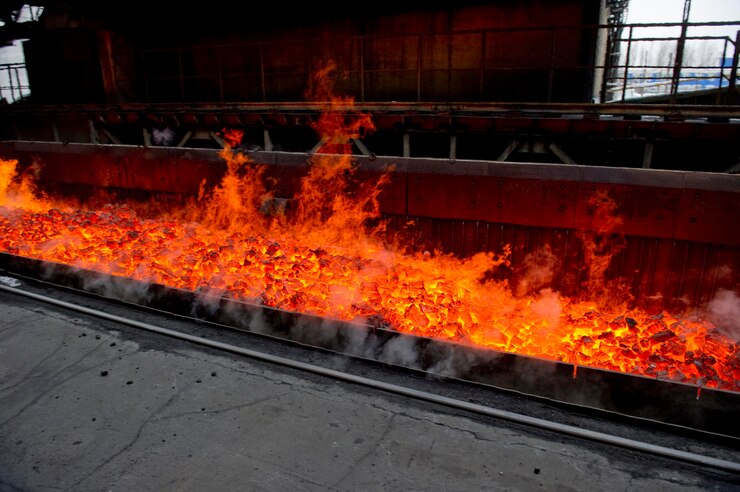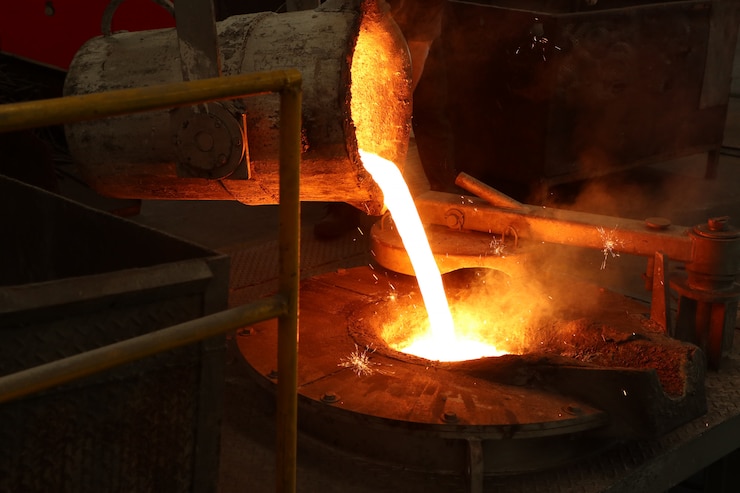Metals are one of the most important engineering materials, known in industries like construction and automotive. One of the comparisons which are often an important one is Cast Steel vs Cast Iron. Both are common types of materials used in India’s manufacturing, studies, and engineering. Though their names sound similar, their properties, processes of manufacture, and applications are very different.
In this blog, we will look at Cast Steel vs Cast Iron, their differences and benefits, and which material will best work for what. By the end of our blog, you will know which type of material best works for your application.
What Is Cast Iron?
The cast steel is described as an iron-based composition typically having up to 2 percent of carbon content, along with manganese, nickel, chromium, and any other alloying elements. Cast steel, compared to cast iron, is more ductile, stronger, and impact resistant because of its low percentage of carbon content.
Cast steel is heat-treated and this implies that the manufacturers can modify the hardness and strength of cast steel and have a highly versatile product. Most cast steel may be utilized in stressful and rigorous conditions, such as railway wheels, mining machines, and others.
Types of Cast Iron:
- Grey Cast Iron: Commonly found in pipes, cookware, and bases for machinery.
- White Cast Iron: Extremely hard and used for parts needing wear resistance.
- Ductile Cast Iron: A stronger and more flexible cast iron commonly found in automotive and structural parts.
Due to the low costs and the ease of casting, cast iron is a popular form of material for mass manufacturing.
What Is Cast Steel?
Cast steel is an iron alloy, which contains up to 2% carbon and is made up of manganese, nickel, chromium and/or other alloying components. The cast steel is stronger, ductile, and impact-resistant compared to cast iron due to the low percentage of carbon.
The relatively ease of heat-treating cast steel for hardness and strength increases its versatility. Applications include everything from railway wheels to mining equipment, often in high stress and demanding environments.
Cast Steel vs Cast Iron: Key Differences by Parameters
To understand their practical differences of Cast Steel vs Cast Iron, let’s compare them under specific parameters:
| Property | Cast Iron | Cast Steel |
| Carbon Content | 2–4% | <2% |
| Strength | Moderate | High |
| Hardness | High | Moderate |
| Ductility | Low | High |
| Machinability | Easy | Moderate |
| Shock Resistance | Low | High |
| Wear Resistance | High | Moderate |
1. Chemical Composition
Cast Iron: Carbon content between 2–4%, high levels of silicon, and low ductility.
Cast Steel: Carbon content less than 2%, has more alloying elements, and high ductility.
2. Strength
Cast iron: High compressive strength, weak against tension.
Cast steel: Has high tensile strength, can sustain hits from objects that impact against it.
3. Ductility & Toughness
Cast iron: low ductility and cracks easily.

Cast Steel: High ductility allows it to bend and stretch without losing its shape.
4. Wear Resistance
Cast Iron: Very good wear resistance as a result of its hardness.
Cast Steel: Fair wear resistance, but does not wear out when loaded (such as when impact loads are applied).
5. Shock Resistance
Cast iron: foreign, breaks with a shocking noise.
Cast Steel: Shock and Vibration absorber.
6. Machinability
Cast Iron: It is easier to machine and cast into a more complex form.
Cast Steel: More difficult, requires more effort to machine.
7. Corrosion Resistance
Cast Iron: This is apt to rust unless it is painted.
Cast Steel: It is a harder material that is less affected by rust, particularly in the presence of nickel or chromium.
8. Melting Point
Cast Iron: It is much easier to cast, and the melting point is about 12° C.
Cast steel: Cast Steel has a melting point of about 1500 °C, which is more energy-consuming to melt and cast.
9. Cost Factor
Cast Iron: More economical to produce in India, usually made into pipes, engine blocks, cookware, etc.
Cast Steel: More expensive, but it is a lot stronger and more durable for demanding applications.
Applications of Cast Iron
Cast iron is often the material of choice when the trade-offs between cost and wear resistance are more important than tensile strength. Typical applications for cast iron include:
- Engine blocks, cylinder heads, and gearboxes in motor vehicles.
- Pipes and fittings in drainage and sewage systems.
- Saucepans, kadais, and tavas are used for cooking.
- Heavy machine bases and lathe beds.
Applications of Cast Steel
Cast steel is used where strength, shock resistance, and toughness are important. Some major applications are:
- Railway wheels, axles, and couplings
- Mining and construction equipment
- Turbines and pressure vessels in power plants
- Tools, gears, and machine components in industries
Durability and Maintenance
One of the main factors in the debate of Cast Steel vs Cast Iron is Durability.
- Cast Iron contains more carbon, hence it is more susceptible to corrosion, but with coating and paint, the life of the cast iron can be extended.
- Cast Steel has more corrosiveness, especially when it is alloyed with chromium or nickel. It is also not as maintenance-intensive when it is applied in high-stress conditions.
Cast steel is a high-reliability, maintenance-free material in such industries as oil & gas, energy, and heavy engineering.
The Indian Market Perspective
In India, the demand for cast iron and cast steel continues to rise, due to rapid infrastructure development. Cast iron is still the material of choice in municipal work and piping, and automobile casting parts, due to its merit of price per performance and durability.
Meanwhile, in the railway, energy, and heavy machinery sectors, where price is secondary to performance, cast steel is infiltrating.
In the future, as India builds its manufacturing base in competition with other international suppliers, the demand for both materials will still exist, but will be determined by the demand of each industry internally.
Which One Should You Choose?
The following is a brief guideline to use in case you have chosen between the two:
Pick Cast Iron when:
- The required material is inexpensive.
- Wear resistance and machinability are important.
- There are complex shapes to be cast that need to stay on budget.
Pick Cast Steel when:
- Higher strength and ductility are needed.
- The application is exposed to shock or stress.
- It needs to be long-term and safe.
Final Thoughts
The debate between Cast Steel vs Cast Iron is not on which of the two materials is more suited compared to the other, but on the appropriate material for the appropriate job.
The cast iron is cheap, resists wear, whereas cast steel is associated with toughness, strength, and durability.
In Simple words:
- The use of Cast Iron would be the best with respect to cost-effectiveness and wear resistance.
- Cast Steel is used when there is a need for strength, toughness, and conditions of demand.
The correct decision will guarantee improved performance, reduction of costs, and improved life span of any industrial or construction projects in India.



